originally posted at https://canmom.tumblr.com/post/682789...
Hi friends! It’s a Thursday, and I hope you know what that means by now~
Next week: the two year anniversary of Animation Night! I’m aiming to get a commenting system up on my blog by then and do some of the cleanup tasks for the Animation Night archive.
Now, you like Animation Night and want it (and various other creative projects) to continue, please forgive me for humbly passing around the Patreon hat. The next week or two I’m going to be working on illustrating, and then releasing, a certain RPG setting with all sorts of things I like such as jelly alchemists, weird gender shit, and early-modern body horror, and I’ll be keeping you posted on there.
Anyway, on to this week’s event: lesbian apocalyptic sci-fi mecha OVAs from the 1980s.
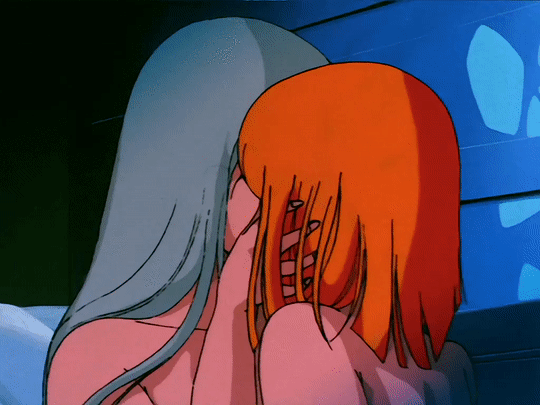
Tonight on Animation Night, I have two of the earliest ‘big’ OVAs, back from when the new format was still an open question, which both became cult classics: Megazone 23 and Fight! Iczer One. And this writeup, I’m indebted to Youtube user MercuryFalcon, who put together a 30-minute video about Iczer-1’s production, and even more so the blog aaltomies, who wrote this impressively detailed retrospective.
We’ll begin with the erotic manga magazine Lemon People, which I believe I first talked about back on Animation Night 69 (now in its proper place in the Animation Night archive!), and the mangaka Rei Aran (阿乱 霊). Despite the long shadow that Lemon People’s work cast over the evolution of anime and manga styles, and Aran being active at their strongest period, Aran remains barely known outside of his work on Iczer One. Aaltomies writes that Aran was prone to overworking, and as a consequence, most of his works - including Fight! Iczer-1 and Galaxy Police Patrizer-3 (the latter running from 1983 to 1993) - remain unfinished.
You can see some of Aran’s work at the link above. He was a self-taught artist, working his way up through dōjin groups before submitting work to Lemon People at the suggestion of his friend Hariken Ryu. but here’s a cover he drew for the issue of Lemon People in which Iczer 1 debuted:

The jump to OVA came via Hariken Ryu’s college friend, Toshihiro Hirano (who’d later change his first name to Toshiki), who in 1982 had been working on Macross (Animation Night 64). Having yakked sufficent de culture, Ryu, Hirano and many Macross animators announced in ‘83 they would adapt Ryu’s 1982 manga Gekisatsu Uchuken (Space Punch) for TV, but it fell through. Meeting Aran, Hirano instead started talking about adapting Iczer, perhaps as one of these new-fangled OVAs…
The OVA format was still very new in 1985, and even in the bubble economy (c.f. Animation Night 34). The ball was supposed to start rolling Mamoru Oshii’s Dallos (1983), but when it flopped, the idea was postponed and Hirano went to work on other projects like Megazone 23 (1985). Planned as a 12-episode TV anime, funding was pulled and Megazone came out instead as an OVA, where in contrast to Dallos, it proved wildly successful. Suddenly adapting Iczer was back on the table for AIC, who gave Hirano the choice of what to adapt; he chose Iczer, and the first episode released that very same year.
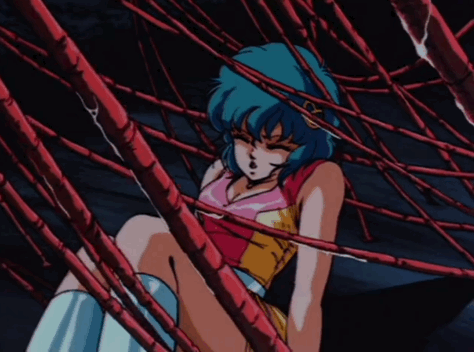
Hirano is one of the major sources of the look of 80s anime, and yet he was slow to come around to the medium. (Drawing now on another retrospective on him here). Born in the 50s, Hirano was initially dismissive of anime, seeing it as inferior to his beloved manga; he changed his mind after seeing Toei’s The Little Prince and the Eight-Headed Dragon (わんぱく王子の大蛇退治, 1963), which was I suppose you could say his sakuga awakening, but his biggest passion was tokusatsu, particularly Tōhō’s kaiju movies and TV series like Ultra Q and Ultraman. His interests drifted to Western movies, but he was pulled back in high school by the 70s era of tokusatsu (notably the original Kamen Rider) and early robot anime such as Mazinger Z.
This waxing and waning interest continued as he went to Tokyo Designer Gakuin College, falling in with a group of future mangaka including Hariken Ryu who shared his love for robots and toku. Still, it wasn’t as if he then ran straight for anime; he took a part-time job at Toei at university, drawing inbetweens for none other than Yoshinori Kanada (see Animation Night 62); he only gradually came around to working full-time at Toei.
As such, he is an artist whose passions are very straightforward: he wants to make stuff with the same feeling as tokusatsu; he likes drawing robots, superheroes, monsters and women he finds beautiful. He got his start at Toei only to find to his immense disappointment that he’d instead be working on a 200-episode historical series Ikiyu-san about a young Buddhist monk, which ran from ‘75 to ‘82. He absolutely hated the ~8 months he worked on this series, only finding relief drawing robots for Televi-kun magazine. Eventually he escaped to draw nigen [2nd key animation, aka tiedowns] of cars for a racing show Arrow Emblem: Hawk of the Grand Prix (1977) directed by Rintaro, which proved much more to his taste. This led him directly to work on Captain Harlock, drawing nigen for two episodes, particularly proud of his illustrations of the women antagonists in each. (Not sure if the following is one of Hirano’s…)
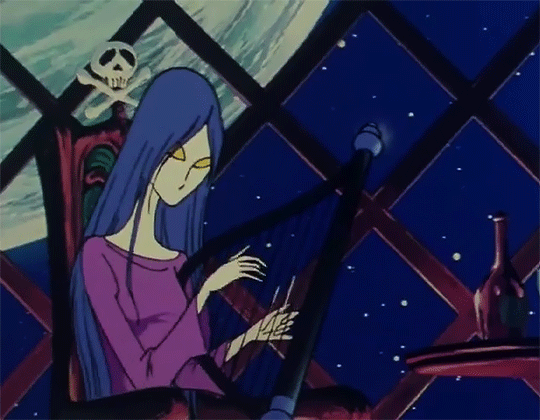
Next came inbetween checking on Farewell to Space Battleship Yamato (1978) - it’s notable that here Toei were already outsourcing douga (cleanup and inbetweens) to South Korea, and Hirano’s job here was to fix those drawings or even fully redraw scenes that weren’t up to standard. This is where we can join (drink) Matteo Watzky’s account of the period here, as Hirano finally left Toei to found studio Beebow with Tomonori Kogawa, working as a subcontractor mainly for Sunrise, particularly on Space Runaway Ideon (see: Animation Night 88). There, we started to see some real breakthroughs in drawing characters with solid 3D form; Watzky points to this cut from the Ideon followup film Be Invoked.
Following this, Hirano launched another new studio, called Io, and it’s here his work on Macross takes place. Hirano was very frustrated with the corners the anime had to cut, but here he started rising to prominence for his animation of Linn Minmay, off the back of which he became one of the animation directors for the Macross film Do You Remember Love (Animation Night 64), made an episode director debut in the foundational ero-anime series Cream Lemon (Animation Night 69). DYRL was followed for the Macross team by Megazone 23, pitched as a sci-fi series Omega City 23 that ended up awkwardly compressed into an OVA film after a troubled production, yet this all found unexpected success on the sheer strength of the animation and style - much of that being Hirano’s character designs. (Notably, this film also featured the key animation work of Hideaki Anno.) Which brings us back up to Iczer One…
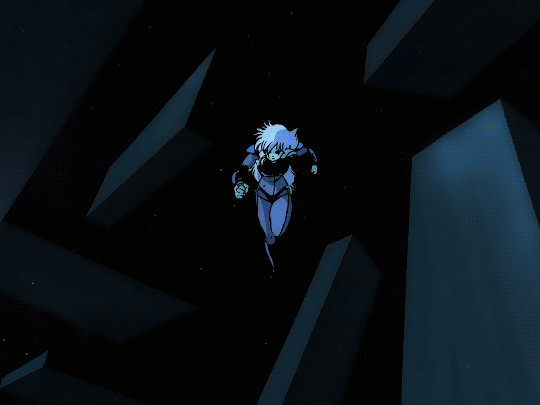
So what’s it about? We’ll start with Iczer One. Let’s put it this way: in 1983, throwing around the word Cthulhu wasn’t nearly so stale as it is today. It’s packed full of indulgent ideas and things that someone like Hirano would like: women, robots, body horror… and he made it even more so, making it much more lesbian centric. As not just the director but also the character designer
The story begins with a catgirl called Iczer-One - this is a catgirl of the classical anime big hair mode - who wishes to fight aliens called the Cthulhu (no relation, I think) who are attempting to take over the Earth by implanting mind control parasites. When Iczer foils this plan, they escalate to full-on military invasion. To fight back, Iczer needs a suitable ‘synchronisation partner’ to pilot her mecha… which she finds in a Japanese schoolgirl called Nagisa. The battle against the aliens rapidly escalates, destroying much of the planet that Iczer wished to defend.
And Megazone 23? It’s set in a far-future city deep in space, locked in a war with a rival megazone. The government of the eponymous Megazone 23 launch a plan to hack the city’s governing AI, EVE, and force it to participate in the war. In the midst of this is Shōgo Yahagi, who gets pulled into a complicated intrigue which reveals that, surprisingly enough, the government is full of lies and his world is some kind of simulation. The first two parts of the OVA series, released in 1985 and 86, tell the story of what happens to Shōgo, while the third, released in 1989 under the direction of Ichiro Itano (yep! the missile circus guy!), takes place after a centuries long time skip during which time Shōgo has undergone a serious heel turn. whoops, I got this mixed up: Itano directed the second episode in 86, and actually that’s a really interesting story in its own right which I’ll address in a followup post!
The animation is absolutely spectacular: you can totally see that this is the same team that made Macross DYRL, and it’s full of the ideas of the Kanada school taken to an absurd level of polish - like just look at this background animation, how??
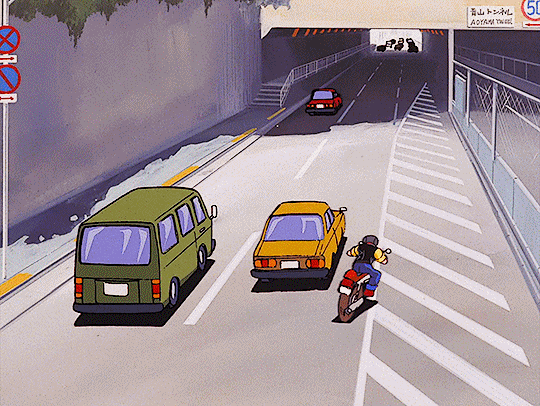
I will admit, these are absolutely on the more indulgent end of OVAs and probably not going to offer deep meditations on the human condition, but they’re also a fantastic window into a period when the craft of animation was going through some seriously rapid development. It really is hard to overstate the difference in animation of 1980 and 1983: the drawings are more convincingly physical, rich in detail, move better; effects animation has completely transformed; the complex camerawork of people like Itano has come in. Nothing would be the same after.
Hirano would go on to make many more OVAs and films, both as a director and key animator which I may well address in the future; he would later fall in with the realists and work on Roujin Z and Akira, and work on Itano’s gory 90s OVAs like Battle Royal High School. And although his 80s designs sensibility went out of fashion, he is still very active in the anime industry today, most recently directing a Netflix-backed adaptation of the Grappler Baki martial arts manga just last year! Which is wild, because he is almost 70 years old at this point.
So if that all sounds fun, please join me at 7pm UK time at our usual place, twitch.tv/canmom! In the meantime, I will hopefully soon be live with some drawing of my own.
Comments